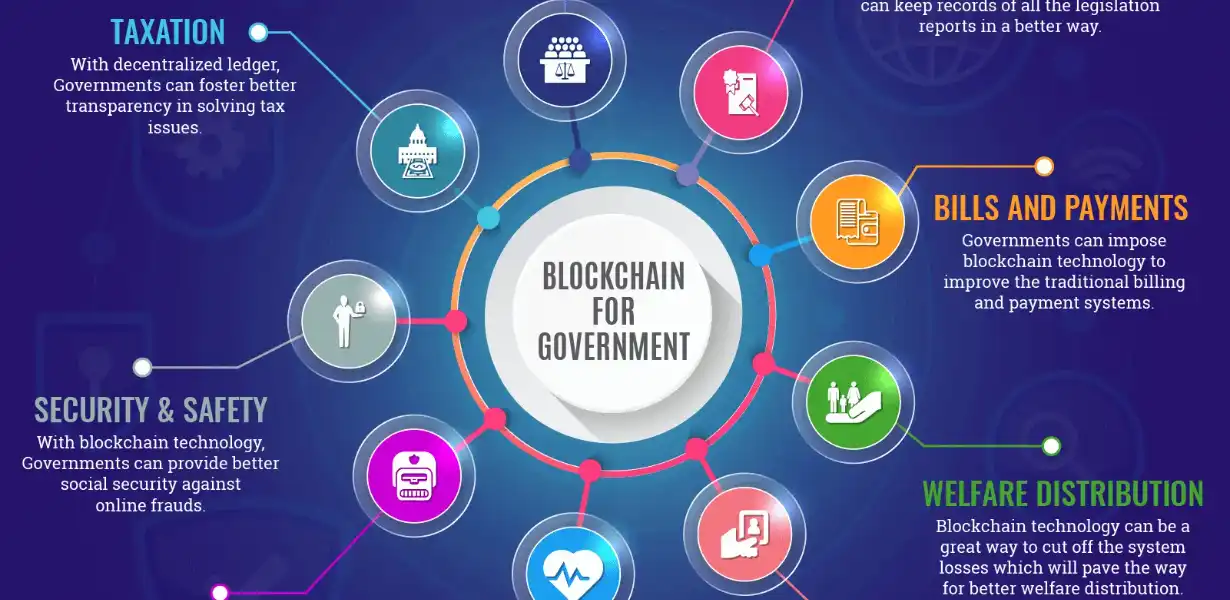
Blockchain-powered Domain Transfers: Enhancing Security and Ownership
- Post
- August 8, 2023
- Domain & DNS Management, Domain Transfers, Internet & Web Services
- 0 Comments
In the ever-evolving landscape of digital domains, the introduction of blockchain technology has brought forth a new era of security, transparency, and efficiency. In this comprehensive guide, we delve into the revolutionary concept of blockchain-powered domain transfers – a paradigm shift that has redefined the way we think about domain ownership and security.
Unveiling the Essence of Domain Transfers
The Traditional Landscape of Transferring Domains
Traditionally, transferring domain ownership has been a process fraught with challenges. The intricate web of intermediaries, bureaucratic paperwork, and prolonged timelines often left domain owners frustrated and concerned about the security of their assets. However, the emergence of blockchain technology has paved the way for a streamlined, secure, and efficient domain transfer process.
Decoding Blockchain: A Primer
Before we delve into the specifics of blockchain-powered domain transfers, let’s grasp the core concepts of blockchain. At its essence, a blockchain is a decentralized, immutable, and transparent digital ledger that records transactions across multiple nodes. Its application in domain transfers brings unprecedented security and trust to the process.
How Blockchain Transforms Domain Transfers
Immutable Ownership Records
Blockchain introduces the concept of immutability to domain ownership records. Once a domain transfer is recorded on the blockchain, it becomes an unalterable entry, providing a tamper-proof record of ownership change. This not only reduces the risk of fraudulent transfers but also enhances the overall trustworthiness of domain transactions.
Eliminating Intermediaries
Traditionally, domain transfers involved various intermediaries such as registrars and escrow services. Blockchain eliminates the need for these intermediaries by enabling peer-to-peer transfers with smart contracts. These self-executing contracts automatically validate the transfer conditions, ensuring a seamless process without the need for intermediaries.
Swift and Global Transfers
The decentralized nature of blockchain facilitates swift and borderless domain transfers. Unlike traditional transfers that could take days or even weeks, blockchain-powered transfers can be completed within minutes, regardless of geographic boundaries. This speed and accessibility are particularly beneficial for businesses operating in a global digital landscape.
Ensuring Security through Cryptography
Role of Cryptography in Domain Transfer
Blockchain leverages cryptographic techniques to enhance security throughout the domain transfer process. Public and private keys are used to establish ownership and authorize transfers. These keys ensure that only authorized parties can initiate and approve transfers, minimizing the risk of unauthorized domain changes.
Prevention of Fraudulent Transfers
Blockchain’s cryptographic security measures significantly reduce the risk of fraudulent transfers. Each transaction is verified by network participants, and once added to the blockchain, it becomes a permanent and auditable record. This level of transparency and security makes it exceedingly difficult for malicious actors to manipulate the transfer process.
Navigating the Blockchain Domain Transfer Process
Step-by-Step Guide to Blockchain Domain Transfer
- Initiation: The process begins with the current domain owner initiating the transfer by generating a transfer request on the blockchain platform.
- Authorization: The owner’s private key is used to authorize the transfer request. This cryptographic authorization ensures the owner’s consent.
- Validation: The blockchain network validates the transfer request through consensus mechanisms, ensuring its legitimacy.
- Record Keeping: The approved transfer is recorded as a permanent entry on the blockchain, providing an immutable record of the ownership change.
- Confirmation: The new owner’s public key is registered, confirming the successful transfer. The domain’s ownership details are updated on the blockchain.
Addressing Concerns and Challenges
Regulatory Considerations
While blockchain-powered domain transfers offer undeniable benefits, they also raise regulatory considerations. Different jurisdictions have varying legal frameworks for recognizing blockchain transactions. Collaborative efforts between blockchain advocates and regulatory bodies are crucial to aligning these technologies with existing legal structures.
Key Management and Recovery
The cryptographic nature of blockchain-powered transfers emphasizes the importance of secure key management. Owners must ensure the safekeeping of their private keys to prevent unauthorized transfers. Moreover, mechanisms for key recovery in case of loss or theft need to be established to maintain seamless ownership transitions.
Final Words
In the dynamic realm of domain transfers, blockchain technology stands as a beacon of innovation and security. By introducing immutability, eliminating intermediaries, and fortifying transactions through cryptography, blockchain has revolutionized the way we transfer domain ownership. This transformative leap towards efficiency and trust sets the stage for a new era of digital asset management.
Commonly Asked Questions
Q1: Can blockchain prevent domain theft?
A: Yes, blockchain’s immutable records and cryptographic security make it exceedingly challenging for malicious actors to steal domains.
Q2: How does blockchain handle international transfers?
A: Blockchain’s decentralized nature enables swift and global transfers, making geographic boundaries virtually irrelevant.
Q3: What happens if I lose my private key?
A: Losing a private key can result in permanent loss of access. It’s crucial to store keys securely and consider key recovery solutions.
Q4: Are blockchain transfers legally recognized everywhere?
A: Recognition of blockchain transactions varies by jurisdiction. Collaboration between blockchain advocates and regulators is essential.
Q5: Can I reverse a blockchain domain transfer?
A: Once recorded on the blockchain, transfers are immutable. Ensure careful verification before initiating transfers.




